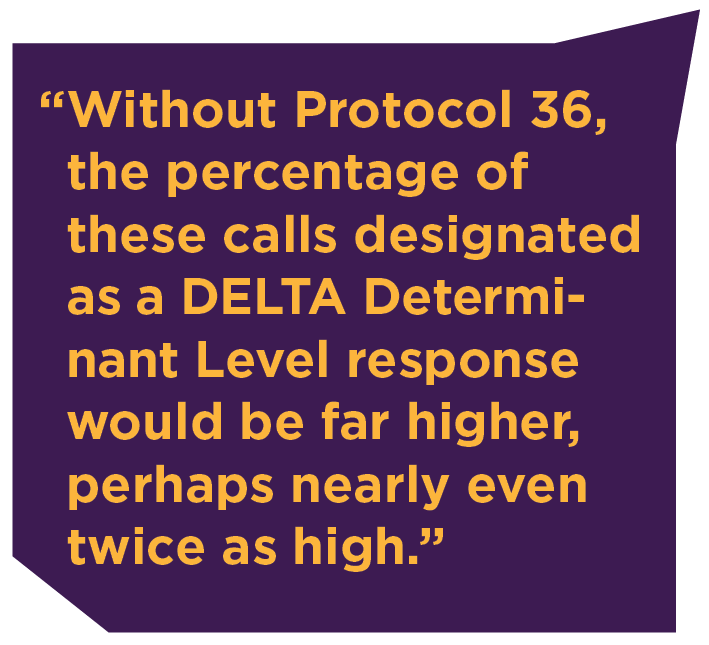


Protocol 36:
Making the most of your limited EMS resources during a pandemic
During a pandemic, dispatch agencies need a robust triage tool when emergency services become stressed from high call loads, workforce degradation, and hospital saturation. This tool needs to be scalable at the local level so that it can escalated and de-escalated at the discretion of local EMS authorities.
The purpose of Protocol 36 is to allow Emergency Medical Dispatchers to identify—at the point of call intake—those patients that are most likely COVID-19 symptomatic, and then triage them within a single dispatch protocol that allows the most efficient and effective use of pandemic-related limited EMS and public safety resources.
Since COVID-19 began to spread rapidly in March, 28 dispatch agencies sharing data with the IAED™ Data Center have triaged nearly 20,000 emergency calls using Protocol 36. Of these calls, only 22.7% were designated to a DELTA Determinant Level (the highest potential Determinant Level under Protocol 36). By creating a system to quickly identify lower level calls, EMS authorities can better allocate personnel, equipment, and other strained resources to ensure that they're available for the most critical patients, as well as identify patients who are COVID-19 symptomatic.
Without Protocol 36, the percentage of these calls designated as a DELTA Determinant Level response would be far higher, perhaps nearly even twice as high. For the six-month period preceding March, almost 40% of the calls triaged under the three Protocols encompassed by Protocol 36 (Protocol 6: Breathing Problems, Protocol 10: Chest Pain/Chest Discomfort, and Protocol 26: Sick Person) were designated as a DELTA Determinant Level response or higher.
In the current COVID-19 pandemic, Protocol 36 is doing exactly what it is designed to do: effectively and efficiently triaging COVID-19 symptomatic patients and helping stressed emergency medical services identify those patients needing the highest priority-level response.

